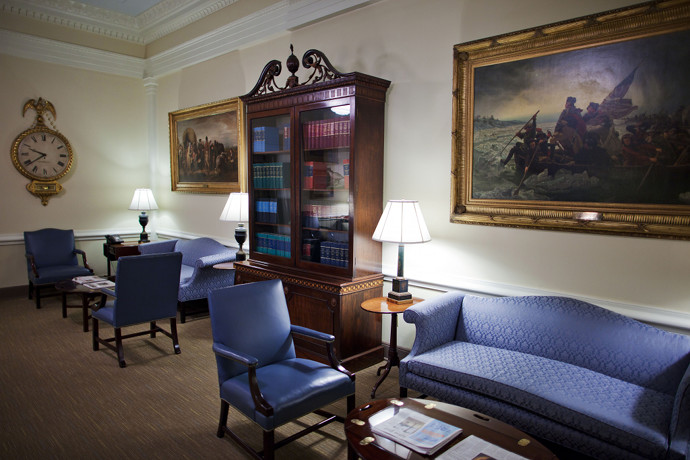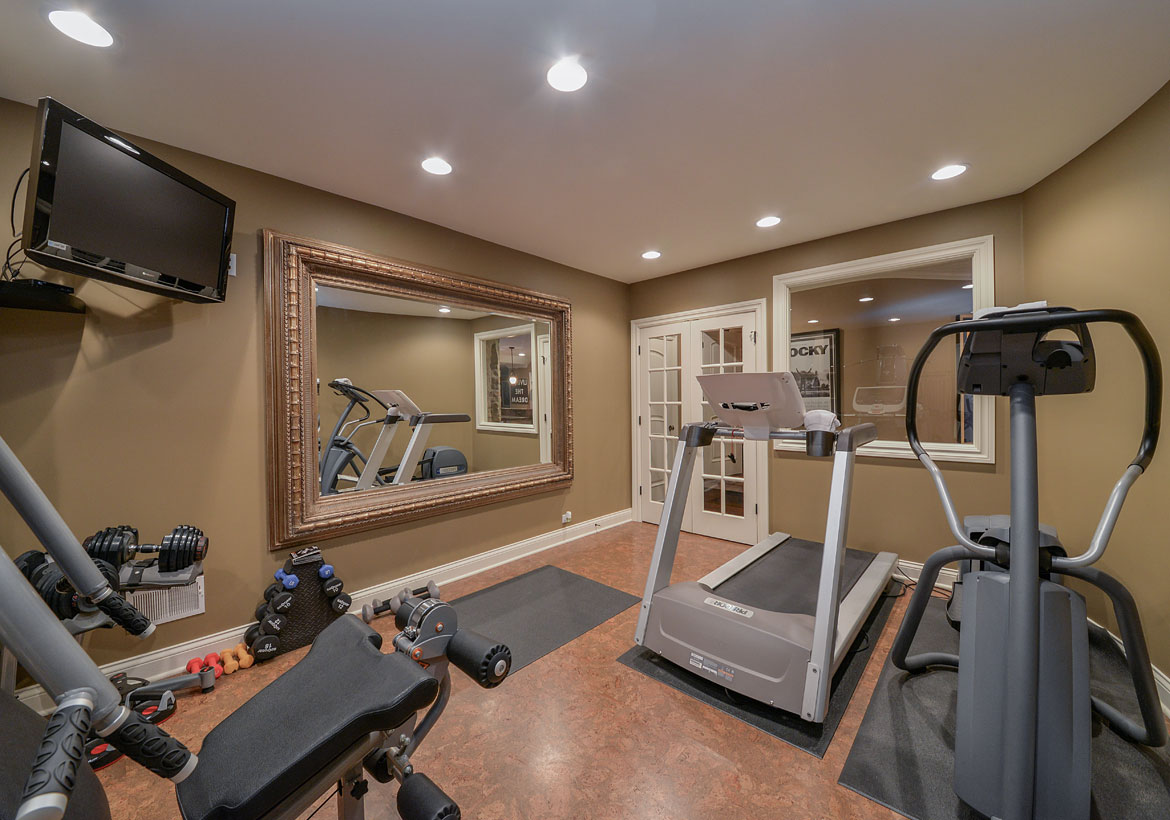Table Of Content

His workspace was a two-room suite of Executive Office and Cabinet Room, occupying the eastern third of the building. Its furniture, including the president's desk, was designed by an architect, Charles Follen McKim, and executed by A. H. Davenport and Company, both of Boston.[13] Now much altered, the 1902 Executive Office survives as the Roosevelt Room, a windowless interior meeting-room, diagonally opposite the Oval Office. The vault not only made for a fireproof floor but created a cellar space below, as the stairway indicates.

Washington's bow window
Inside the failed White House coup to oust Biden press secretary Karine Jean-Pierre - New York Post
Inside the failed White House coup to oust Biden press secretary Karine Jean-Pierre.
Posted: Fri, 26 Apr 2024 11:29:00 GMT [source]
The access problem through the intended colonnade, mentioned by Latrobe, was solved by two large carriage openings forming the east end of the wing and shown on the Walter plan. This temporary solution, due to the incomplete wing row, is also confirmed on the collaborative site plan showing Latrobe’s bold marks leading a carriage drive from the north public grounds directly into the end of the east wing. While servants might have occupied the extended wing as Jefferson indicated, his “hen house” was forgotten.
HISTORY
On the wall to the right of window bay three (upper left foreground), and below to the right of the mason, is evidence of the missing wall between the wood room and the privy. This same wall also appears on the right side of the photograph in the foreground just below and east of the doorway (due to the perspective of the photograph things do not seem to align if the opening bays are not used as reference). This wall also establishes the eastern wall of room three, the necessary, whose full extent can- not be seen in the photograph. These walls for the original rooms two and three prove that the larger room shown in the Walter plan was created out of two earlier rooms.
WW tour president letter
Televisions for secure video conferences and technology can link the President to generals and world leaders around the globe. White House press secretary Karine Jean-Pierre said President Biden has been briefed on the incident and noted the area where the cocaine was discovered is "heavily traveled" by visitors. The construction of the West Wing was a transformative moment in the history of the White House, allowing for more efficient and centralized governance. Inside President Biden's White House, the West Wing plays a crucial role in the daily operations of the administration. It has undergone million-dollar renovations and is home to a carefully selected staff. News of Roosevelt's decisions spread through wire services transmitted by telegraph.
White House press corps
The letter also confirms Jefferson’s idea for using a parallel row of clerk’s offices, the fact that he had sent Latrobe sketches, the frustration with Latrobe working long distance from Delaware, and the debate over using good stone versus cheaper stone covered with rough cast. Because the ice house is off-center to the north in the wing, there is room on its south side under the arch for space containing a stairway to be squeezed between the curved ice house wall and the south exterior wall. Completed in 1875, the State Department’s south wing was the first to be occupied, with its elegant four-story library (completed in 1876), Diplomatic Reception Room, and Secretary’s office decorated with carved wood, Oriental rugs, and stenciled wall patterns. The Navy Department moved into the east wing in 1879, where elaborate wall and ceiling stenciling and marquetry floors decorated the office of the Secretary.
James Hoban, the original architect, came back by conservative demand to rebuild the largely destroyed mansion, just as Latrobe also returned to rebuild the Capitol. Having no deep cellars in the basement posed a problem for keeping expensive drink at cool temperatures. On the southeast wall hangs President Theodore Roosevelt’s Congressional Medal of Honor awarded posthumously on January 16, 2001 to honor his heroism in the Spanish-American War in 1898. To the left of the fireplace hangs President Theodore Roosevelt’s Nobel Peace Prize, awarded in 1906, for his mediation of the Russo-Japanese War peace settlement. President Thomas Jefferson first opened the White House for public tours because he understood then, as we do now, that this house belongs to the American people. In our country, the halls of government are not reserved for a privileged few, and the President’s workplace should be no exception.
Eisenhower Executive Office Building
Old floors, furniture, computers and other tech were stripped out and replaced with pristine mahogany paneling from Maryland, stonework from a Virginia quarry, LED lights that can change colors and flat-screen panels. In 1814 British marines infamously compromised the physical preservation of Jefferson’s “office” wings. After the devastating fire, President Madison declared the following year that all must be rebuilt as before, without deviation.
Eleanor Roosevelt's "My Day"
Across the hall from the Oval Office is a conference room, the original location of President Roosevelt's office. Today the room is called the Roosevelt Room, in memory of Theodore Roosevelt, who built the West Wing, and Franklin Roosevelt, who expanded it. On the mantel is the Nobel Peace Prize, which Theodore Roosevelt earned in 1906 for his negotiations with Russia and Japan. He was the first American and the first sitting president to receive this prestigious award. As we navigate the complexities of the present, let us draw inspiration from the room that honors these two transformative presidents. Let us remember that our political history is shaped by leaders who transcended party lines and worked together for the betterment of our nation.
President Herbert Hoover occupied the Secretary of Navy’s office for a few months following a fire in the Oval Office on Christmas Eve 1929. Vice President Lyndon B. Johnson was the first in a succession of Vice Presidents to the present day that have had offices in the building. For the east wing a comparison of the Jefferson and Walter plans can be made, but the photographic and physical evidence is lacking due to that wing’s demolition in 1866. Jefferson’s plan calls for room one tobe “Meat house above, vault below,” room two as “Descent into cellar” stairway, and room three as “necessary.” All three functions are mentioned in the 1805 report. What is seen on Walter’s plan is consistent with Jefferson’s room use and sequence but shows the rearranging of internal room walls to achieve a larger meat house and necessary. Thomas Jefferson never resided in any house very long without altering it to suit his ever-developing taste for comfort and convenience.
Therefore, in 1970, the briefing room was constructed on top of the emptied pool that was installed for President Franklin D. Roosevelt’s physical therapy. In addition to covering the walls with hand-painted striped wallpaper, President Obama added a new oval-shaped rug, which is made of 25% recycled wool. This rug features the Presidential Seal in the center and five historical quotations of meaning by Martin Luther King, Jr. and Presidents Abraham Lincoln, Theodore Roosevelt, Franklin D. Roosevelt, and John F. Kennedy around its border. The current “Sit Room” is a 5,000-square-foot complex of rooms that is staffed 24 hours a day, seven days a week to monitor national and world intelligence information.
However, it was President Franklin D. Roosevelt who recognized the need for expansion and modernization. His presidency saw the United States facing monumental challenges, including the Great Depression and World War II. In response, he expanded the West Wing, adding additional office spaces and meeting rooms to accommodate the growing demands of the executive branch. The West Wing, originally built by President Herbert Hoover, was a visionary addition to the White House. Its purpose was to centralize the executive branch, allowing for efficient governance and facilitating close collaboration between the president and his advisors.
The west wing length given in this draw- ing is 50 feet.28 This size accommodates five window or door bays and accounts for all three of the Jefferson designated spaces as well as an extra space on the end. On the Jefferson plan that fourth space is labeled “saddle room,” but at this period there were no stables in the west wing. Walter’s plan shows a necessary of about 12 feet wide, divided into two stalls with seats, but placed to the west of Jefferson’s necessary.
Without such momentum, the very foundations of our nation's governance could be at risk. However, amidst these challenges, we find solace in the rich history and architectural marvels that grace the halls of the White House. Gone are the Obama-era, midcentury modern furniture, the striped yellow wallpaper and the carpeting that includes famous quotes from presidents FDR and JFK as well as Martin Luther King Jr. The redecoration of the Oval Office is usually coordinated by the first lady's office in the East Wing, working with an interior designer and the White House curator. Franklin D. Roosevelt was the first president to occupy the Modern Oval Office, and placed Rembrandt Peale's George Washington over the mantel.

No comments:
Post a Comment